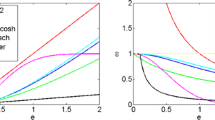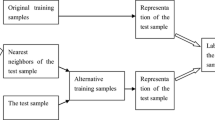Abstract
Sparse representation based classification (SRC) have received a great deal of attention in recent years. The main idea of SRC is to represent a given test sample as a sparse linear combina-tion of all training samples, then classifies the test sample by evaluating which class leads to the minimum residual. Although SRC has achieved good performance, especially in dealing with face occlusion and corruption, it must need a big occlusion dictionary which makes computation very expensive. In this paper, a novel method, called heteroscedastic sparse representation based classification (HSRC), is proposed to address this problem. In the presence of noises, the SRC model exists heteroscedasticity, which makes residual estimation inefficient. Therefore, heteroscedastic correction must be carried out for homoscedasticity by weighting various residuals with heteroscedastic estimation. As for heteroscedasticity, this paper establishes generalized Gaussian model through which to estimate. The proposed HSRC method is applied to face recognition (on the AR and Extended Yale B face databases). The experimental results show that HSRC has significantly less complexity than SRC, while it is more robust.
Similar content being viewed by others
References
Aiazzi B, Alparone L, Baronti S (1999) Estimation based on entropy matching for generalized Gaussian pdf modeling. IEEE Signal Process Lett 6(6): 138–140
Chen SS, Donoho DL, Saunders MA (1998) Atomic decomposition by basis pursuit. SIAM J Sci Comput 20(1): 33–61
Chen SS, Donoho DL, Saunders MA (1999) Atomic decomposition by basis pursuit. SIAM J Sci Comput 20(1): 33–61
Chung F (1997) Spectral graph theory. Regional conference series in mathematics, no. 92
Donoho D (2006) Compressed sensing. IEEE Trans Inform Theory 52(4): 1289–1306
Elad M, Aharon M (2006) Image denoising via sparse and redundant representations over learned dictionaries. IEEE Trans Image Process 15(12): 3736–3745
Francois M, Pierre V, Jean-Philippe T (2006) Matching pursuit-based shape representation and recognition using scale-space. Int J Imaging Syst Technol 6(5): 162–180
Georghiades A, Belhumeur P, Kriegman D (2001) From few to many: illumination cone models for face recognition under variable lighting and pose. IEEE Trans Pattern Anal Mach Intell 23(6): 643–660
Gragg JG (1983) More efficient estimation in the presence of heteroscedasticity of unknown form. Econometrica 51(3): 751–764
Gribonval R, Vandergheynst P (2006) On the exponential convergence of matching pursuits in quasi-incoherent dictionaries. IEEE Trans Inform Theory 52(1): 255–261
He X, Niyogi P (2003) Locality preserving projections. In: Proceedings of 16th conference neural information processing systems
Huang J, Yuen PC, Chen W (2007) Choosing parameters of kernel subspace LDA for recognition of face images under pose and illumination variations. IEEE Trans Syst Man Cybern B Cybern 37: 847–862
Joliffe I (1986) Principal component analysis. Springer, New York
Jonathon Phillips P (1998) Matching pursuit filters applied to face identification. IEEE Trans Image Process 7(8): 1150–1164
Kong H, Wang L, Teoh EK (2005) A framework of 2D fisher discriminant analysis: application to face recognition with small number of training samples. Proc IEEE Int Conf Comput Vis Pattern Recognit 2: 1083–1088
Li H, Jiang T, Zhang K (2004) Efficient and robust feature extraction by maximum margin criterion. In: Proceedings of the advances in neural information processing systems
Long JS, Ervin LH (2000) Using heteroscedasity consistent stand errors in the linear regression model. Am Stat 54: 217–224
Mairal J, Elad M, Sapiro G (2008) Sparse representation for color image restoration. IEEE Trans Image Process 17(1): 53–69
Mallat S, Zhang Z (1993) Matching pursuits with time-frequency dictionaries. IEEE Trans Signal Process 41(12): 3397–3415
Martinez A, Benavente R (1998) The AR face database. CVC Tech. Report No. 24
Meignen S, Meignen H (2006) On the modeling of small sample distributions with generalized Gaussian density in a maximum likelihood framework. IEEE Trans Image Process 15(6): 1647–1652
Muller HG, Stadtmuller U (1987) Estimation of heteroscedasticity in regression analysis. Ann Stat 15(2): 610–625
Murray J, Kreutz-Delgado K (2007) Visual recognition and inference using dynamic overcomplete sparse learning. Neural Comput 19: 2301–2352
Patel VM, Nasrabadi NM, Chellappa R (2010) Automatic target recognition based on simultaneous sparse representation. In: International Conference on Image Processing, pp 1377–1380
Rigamonti R, Brown M, Lepetit V (2011) Are sparse representations really relevant for image classification? In: Computer vision and pattern recognition, pp 1545–1552
Sharifi K (1995) Estimation of shape parameter for generalized Gaussian distributions in subband decompositions of video. IEEE Trans Circuits Syst Video Technol 5: 52–56
Shi Q, Eriksson A, Hengel A (2011) Is face recognition really a compressive sensing problem? In: Computer vision and pattern recognition, pp 553–560
Tropp JA (2004) Greed is good: algorithmic results for sparse approximation. IEEE Trans Inform Theory 50(10): 2231–2242
Varanasi MK, Aazhang B (1989) Parametric generalized Gaussian density estimation. J Acoust Soc Am 86: 1404–1415
Wright J, Yang A, Ma Y (2009) Robust face recognition via sparse representation. IEEE T-PAMI 31(2): 210–227
Yang M, Zhang L (2010) Gabor feature based sparse representation for face recognition with Gabor occlusion dictionary. In: Europeon conference on computer vision
Yang A, Wright J, Ma Y (2007) Feature selection in face recognition: a sparse representation perspective. UC Berkeley Technical Report UCB/EECS-2007-99
Zhang L (2011) Sparse representation or collaborative representation which helps face. In: International conference on computer vision
Author information
Authors and Affiliations
Corresponding author
Rights and permissions
About this article
Cite this article
Zheng, H., Xie, J. & Jin, Z. Heteroscedastic Sparse Representation Based Classification for Face Recognition. Neural Process Lett 35, 233–244 (2012). https://doi.org/10.1007/s11063-012-9214-4
Published:
Issue Date:
DOI: https://doi.org/10.1007/s11063-012-9214-4




